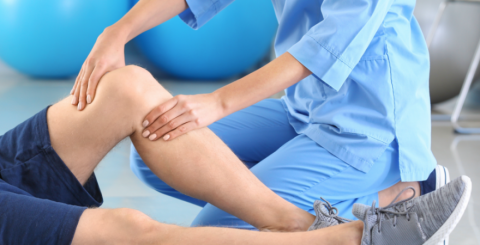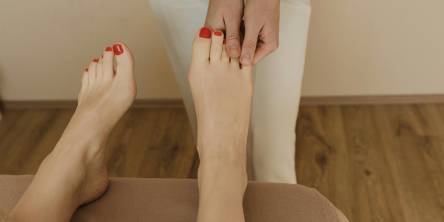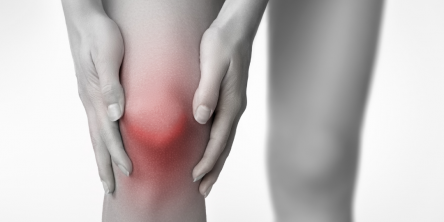Physical Therapy for Lower Back Pain

Lower back pain is like a storm gathering over the horizon all day. The dull discomfort, the throbbing feeling, and the stiffness all add up until, like a thunderclap, it explodes into full-fledged pain. It penetrates your whole body, removing choice and control. Your mobility is restricted, making daily tasks difficult, and if not addressed, it can cause permanent damage.
When you have back pain, relaxing on the sofa all day might be tempting. However, that is a prescription for additional pain. Getting up and moving may be the last thing you want to do, but physical therapy and exercise might be the most effective ways to relieve pain.
Understanding the causes of lower back pain
Lower back pain can be caused by several factors, including mechanical issues, improper posture, trauma, and overuse. It can also develop as a result of several medical disorders, such as arthritis, degenerative disc disease, sciatica, and spinal stenosis.
It's important to determine the root cause of your pain before starting any treatment. Medical practitioners are skilled in identifying and diagnosing the underlying cause of your disease, allowing them to create a tailored treatment plan that addresses your specific requirements. This treatment plan may involve a referral to a physical therapist, where you can learn methods for relieving lower back pain. If you search "physical therapy near me," be sure to choose an experienced and qualified specialist.
For lower back pain, it's essential to find a reliable source of information and advice when seeking professional assistance. Online platforms such as bestdoc may be a great resource, allowing patients to connect with qualified physical therapists, read reviews, and schedule appointments with confidence. Using reputable directories and recognized healthcare platforms, you can verify that your selected therapist has the necessary skills to develop a specific rehabilitation plan, thereby enhancing both short-term alleviation and long-term spinal health.
How is it diagnosed?
Your physical therapist will carry out a thorough evaluation and physical examination that includes:
- A review of your medical history
- Questions regarding your specific symptoms
- Evaluate the quality and quantity of your movements (physical therapists can also address any movement patterns that may put you at risk for a delayed recovery)
- Conducting tests to detect any indications or symptoms of a significant health concern, such as fractured bones or cancer
- Assessment of how you use your body at work, at home, in sports, and for recreation
Imaging techniques, including X-rays, CT scans, and MRIs, are ineffective for the majority of low back pain cases. Patients typically find it disappointing when imaging studies fail to show the underlying cause of their back pain.
What happens during physical therapy for back pain
Most physical therapy sessions begin with an evaluation to determine muscle strength, flexibility, and range of motion. Your PT will assess how you move, speak with you to understand how your pain restricts you, and identify any weaknesses that may be contributing to the problem. They'll then develop a unique, customized treatment plan suited just for you utilizing numerous strategies, including:
Strengthening exercises
Pain in the lower back is frequently attributed to poor posture or movement patterns, in which specific muscles must compensate for other muscles that are not being used effectively. A physical therapist will demonstrate how to perform exercises to strengthen your spine and the muscles around it.
Manual therapy
A physical therapist may use several types of approaches, such as passive soft tissue mobilizations, joint mobilizations, dry needling, and other procedures, to help reduce impairments in joints, tendons, ligaments, and muscles.
Education and training
A physical therapist can help you modify your movement patterns or change actions that place undue strain on your back, allowing you to avoid future back pain. A physical therapist, for example, will examine your sitting, lifting, and walking techniques and teach you how to do these in a safer, more efficient manner in order to keep you healthy and injury-free in the long run.
What should you stay away from if you have back pain?
While each patient's situation is unique, there are some general guidelines. The main concept is to avoid any painful exercises. Proper activities should relieve discomfort rather than create it. It can be tough to distinguish between muscular soreness from working out and pain caused by injury—here is where an experienced physical therapist can help you and ensure that the exercises are appropriate for your circumstances. People who have back pain in specific areas should avoid doing things that will aggravate their pain.
Similar Articles
Search engine optimization (SEO) may help physical therapists improve their online exposure and drive more visitors to their website.
You're sitting at home with two completely different treatment plans from two doctors you trust.
When conservative therapy fails, surgery may be required to alleviate chronic foot or ankle discomfort.
Your body changes with time - muscles and bones shift, ligaments loosen, and circulation may slow. Unfortunately, the aging process has an impact on our feet as well.
Back problems aren't just discomfort or temporary back pain. Many of them can be extremely dangerous and lead to serious complications if you don't seek medical attention on time.
Sciatica is a condition in which the sciatic nerve, the longest nerve in the human body, becomes irritated or pinched
Irritable bowel syndrome (IBS) is a dysfunction of the gastrointestinal tract that manifests as abdominal pain, bloating, flatulence, and intestinal discomfort (constipation, diarrhea, or a combination of both.
Peripheral neuropathy is when the nerves outside your brain and spinal cord—called peripheral nerves—aren’t working the way they should.
Ah, knees. Those underappreciated joints that heroically carry us up stairs, into dance battles, and through every questionable workout decision we make during a fitness phase.









